![ASmallSmallHouse[20x25].jpg](https://images.squarespace-cdn.com/content/v1/5eebac5a4787825d3794e89e/1606945689190-FLKB75XUOBP3FUGE1ROE/ASmallSmallHouse%5B20x25%5D.jpg)
![BluePrint_02[8x10].jpg](https://images.squarespace-cdn.com/content/v1/5eebac5a4787825d3794e89e/1606945695092-NZZOJO38B5YK1NGIZZ81/BluePrint_02%5B8x10%5D.jpg)
![CushmanBrook_01[20x25].jpg](https://images.squarespace-cdn.com/content/v1/5eebac5a4787825d3794e89e/1606945703710-8SCKIORMVPQ68TD3UYDA/CushmanBrook_01%5B20x25%5D.jpg)
![FactoryHollow_01[8x10].jpg](https://images.squarespace-cdn.com/content/v1/5eebac5a4787825d3794e89e/1606945711981-P50ZFKCGWH1IRLXS8JUN/FactoryHollow_01%5B8x10%5D.jpg)
![FactoryHollow_03[24x30].jpg](https://images.squarespace-cdn.com/content/v1/5eebac5a4787825d3794e89e/1606945720667-D5BQM1OKKQA1GROZ3XWH/FactoryHollow_03%5B24x30%5D.jpg)
Bruce Myren
Fort Juniper
We are pleased to be exhibiting Bruce Myren’s newest series, Fort Juniper. As with previous projects, The View Home and The 40th Parallel, Myren’s images are about place, often of historic importance but always with personal connections. This place begins at his childhood home in Amherst, MA and ends at a small house in the woods. Myren has explored and photographed along the Mill River in Amherst concentrating at the home of Robert Francis. Known as a “poet’s place”, this small house was built by Robert Francis. Francis, a very frugal man, reused everything and wasted nothing. As a teenager, Myren walked these woods and along the river between his childhood home and Francis’s home, once meeting Francis on one of his walks. These color images reveal a deep connection and personal understanding of this area and Myren’s intimate connection to the place. Using his 8x10” view camera Myren has captured this place of solitude in all seasons.
Fort Juniper is the name of a small one-person house in the woods of Amherst, Massachusetts. It was built by the poet Robert Francis (1901-87) in 1940 and served as his home until his death. Presently, it is used to host poets-in-residence through the Robert Francis Trust.
While wandering in the woods as a teenager, I often encountered an older man in a cap, someone I assumed to be a poet but never spoke to; many years later, I learned that the man who tipped his hat to me was Francis. It was in this area of Amherst where I first forged my sense of intimacy with the land and it was these same environs that Francis would walk for inspiration. Via Francis’ poems and prose, I am seeing my former hometown with new eyes and capturing the intersection of his understanding of this place with my own experience.
Many people know of the other two great poets from Amherst, Robert Frost and Emily Dickinson, and an additional aim of this project is to bring more attention to Francis and his work. For Francis, Fort Juniper was more than just an abode in which to reside, it was a fort to shelter him, a lens through which he viewed the world, and a mirror with which to observe his inner states. In researching Francis, I have read his autobiography, poems, and many of his newspaper columns. Tales of walks and neighbors, trees and chickens, these are the observations made with the eyes of a poet. It is from Francis’ reflections and poetry that I occasionally cull titles and inspiration for my images.
The area being photographed is growing naturally to include parts of the river that flows away from Fort Juniper towards my childhood home and other locations related to Francis. In essence, this project allows me entrance into a world I had left many years ago and the opportunity to explore how and where our lives interweave through time. – Bruce Myren
Myren received his BFA in Photography from the Massachusetts College of Art and Design and his MFA in Studio Art at the University of Connecticut. His work is in numerous private, corporate and museum collections.
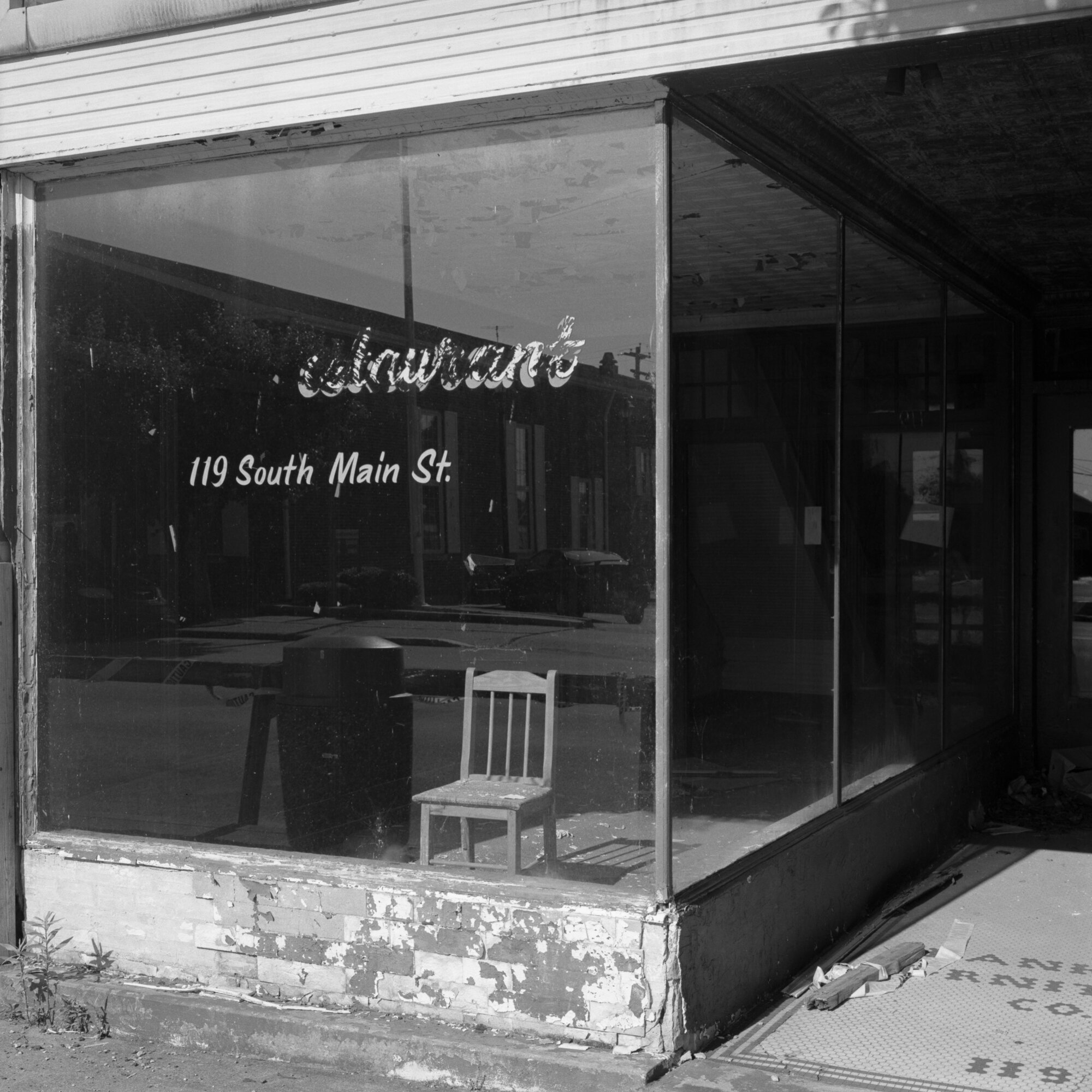
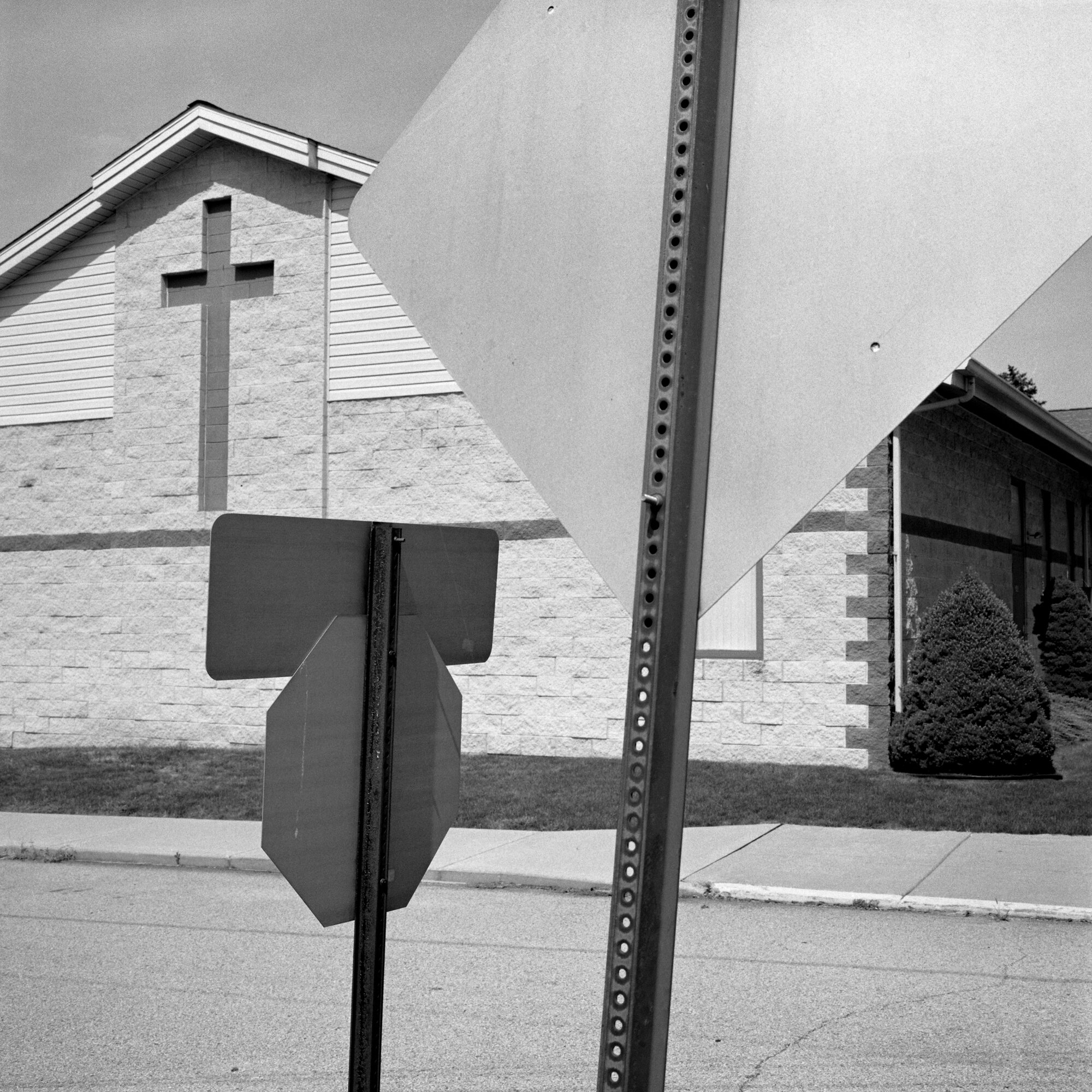

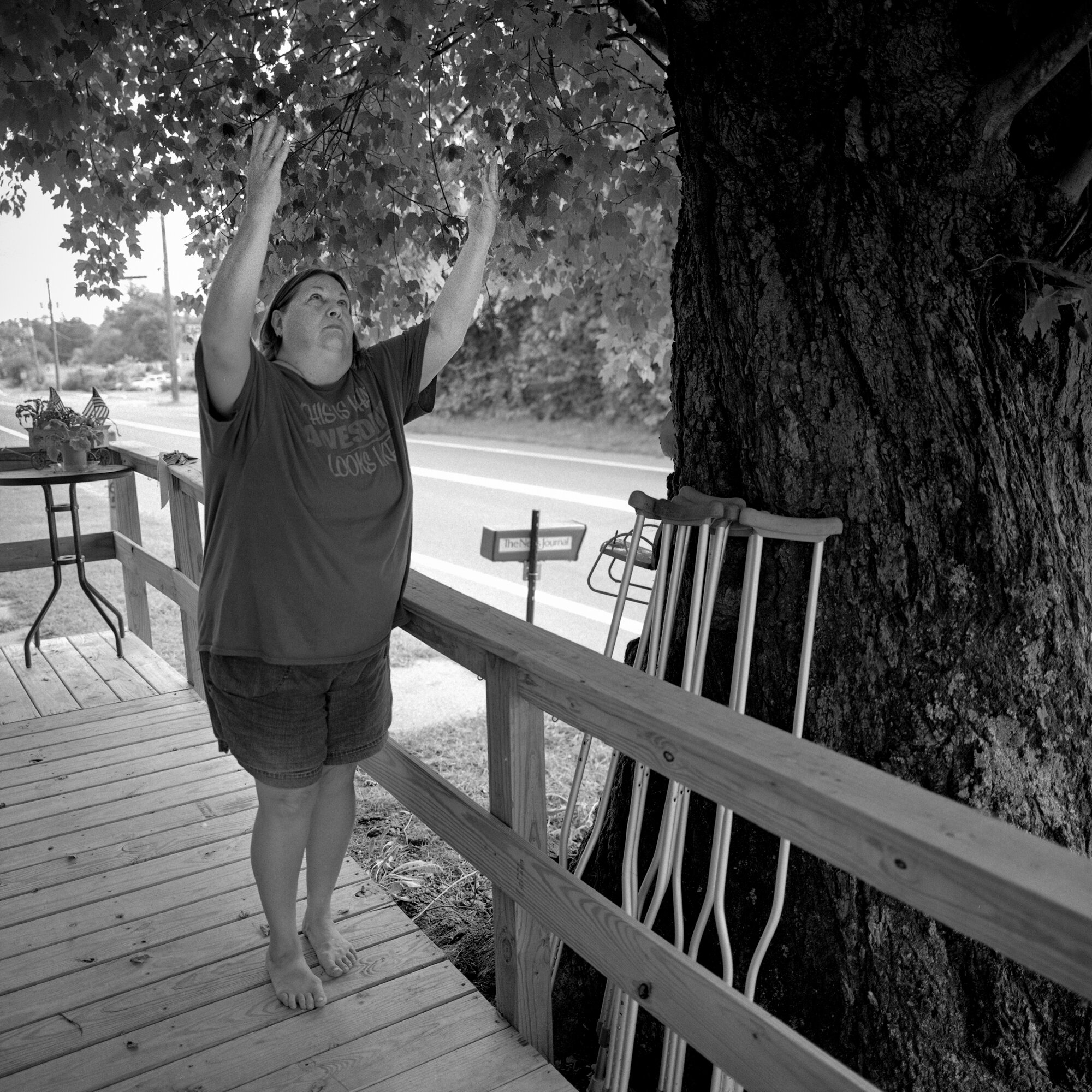

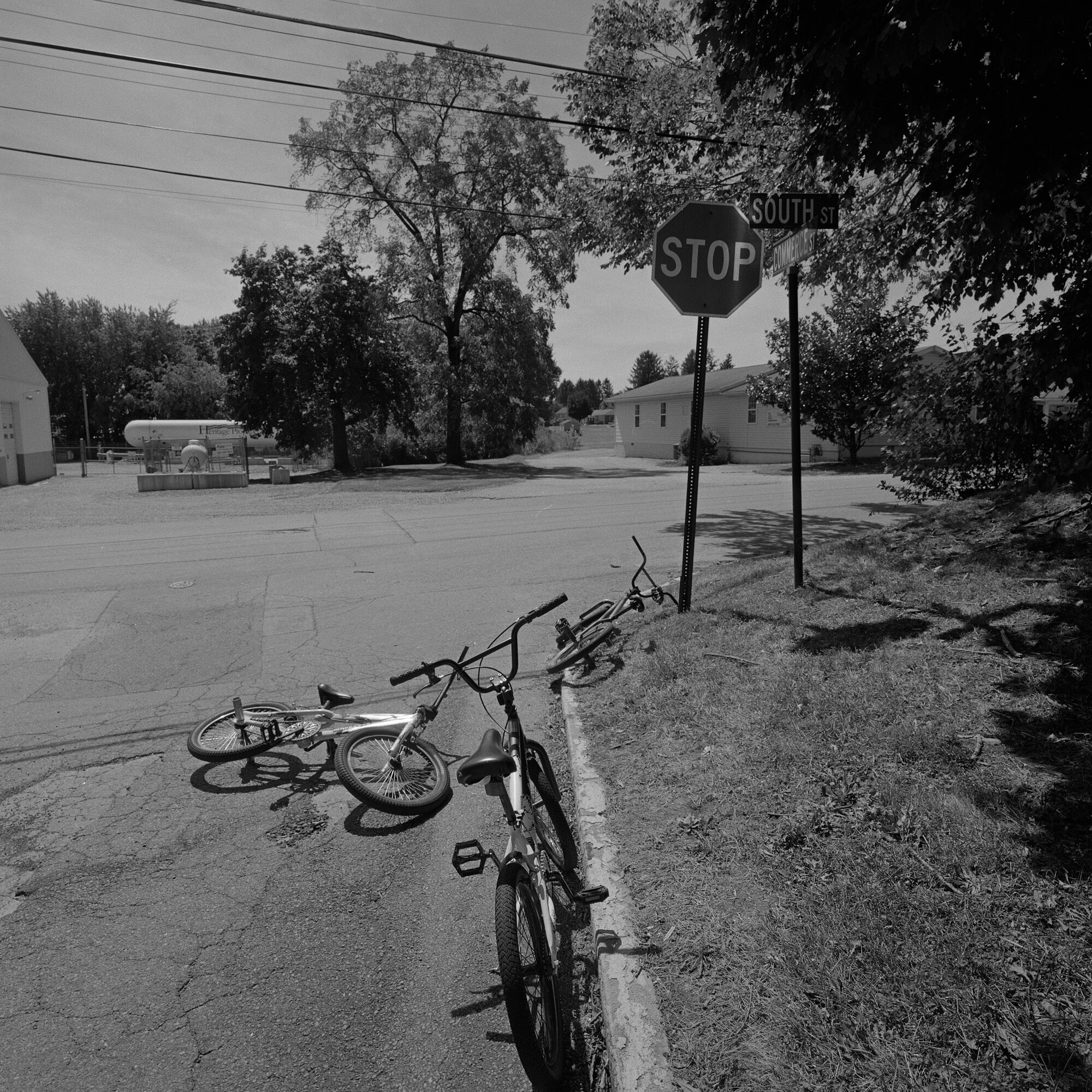
Bill Franson
Mason Dixon: American Fictions
We are pleased to be exhibiting Bill Franson’s newest series, Mason Dixon: American Fictions, a project he began in 2015. The original Line was formed in the 1760s to clarify property rights for two colonial families. Later, North of the Mason-Dixon Line represented freedom for American slaves. At every mile along the Line, a granite stone was placed…looking for these markers, Franson discovered some had been moved, some were on private property, some deep in the woods.
These black and white gelatin silver images feel timeless when one observes the architectural details of the homes and buildings. The Line passes through vast farmlands, coal country, factory towns, and suburbia; however, the downtown areas in many of these small towns reveal the reality of today’s economic struggles with many empty store fronts. Factory towns are almost empty. Franson’s exploration began with the concept of a line and ended up with his personal involvement with the communities and the people who lived there. His images reveal people’s pride in place, connections to their deep religious beliefs, and a continuous commitment to their patriotism.
Bill Franson studied at the Art Institute of Boston with a focus in documentary photography before transferring to Calvin College to earn a Bachelor of Arts degree in Philosophy. He worked as an in-house corporate photographer for fifteen years before establishing his own business. Bill was an Instructor at New England School of Photography until shortly before it closed and for the past ten years a professor of photography at Gordon College. In January 2019 he presented Mason Dixon: American Fictions in a public lecture at the deCordova Museum. His work is held in numerous public and private collections.
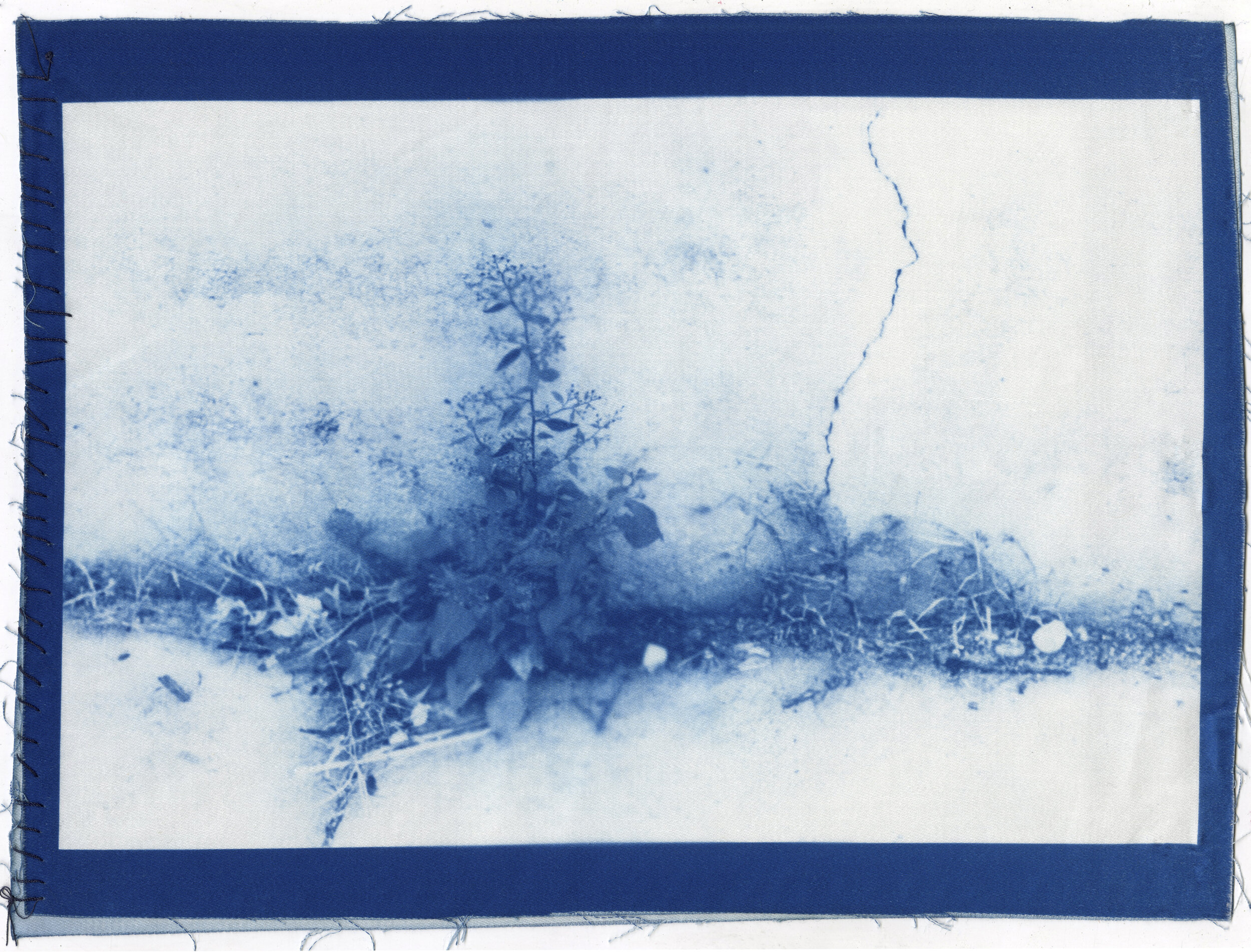
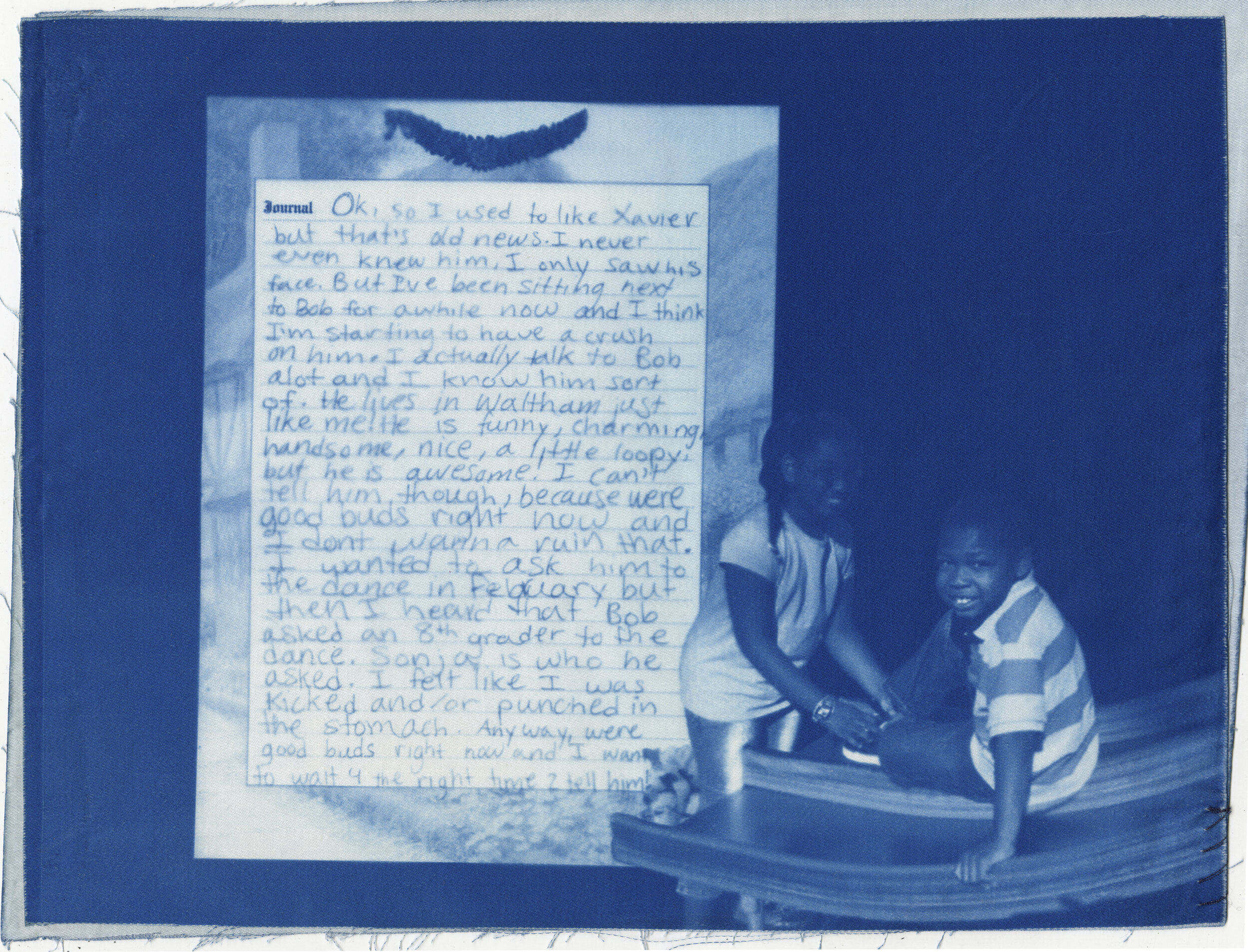
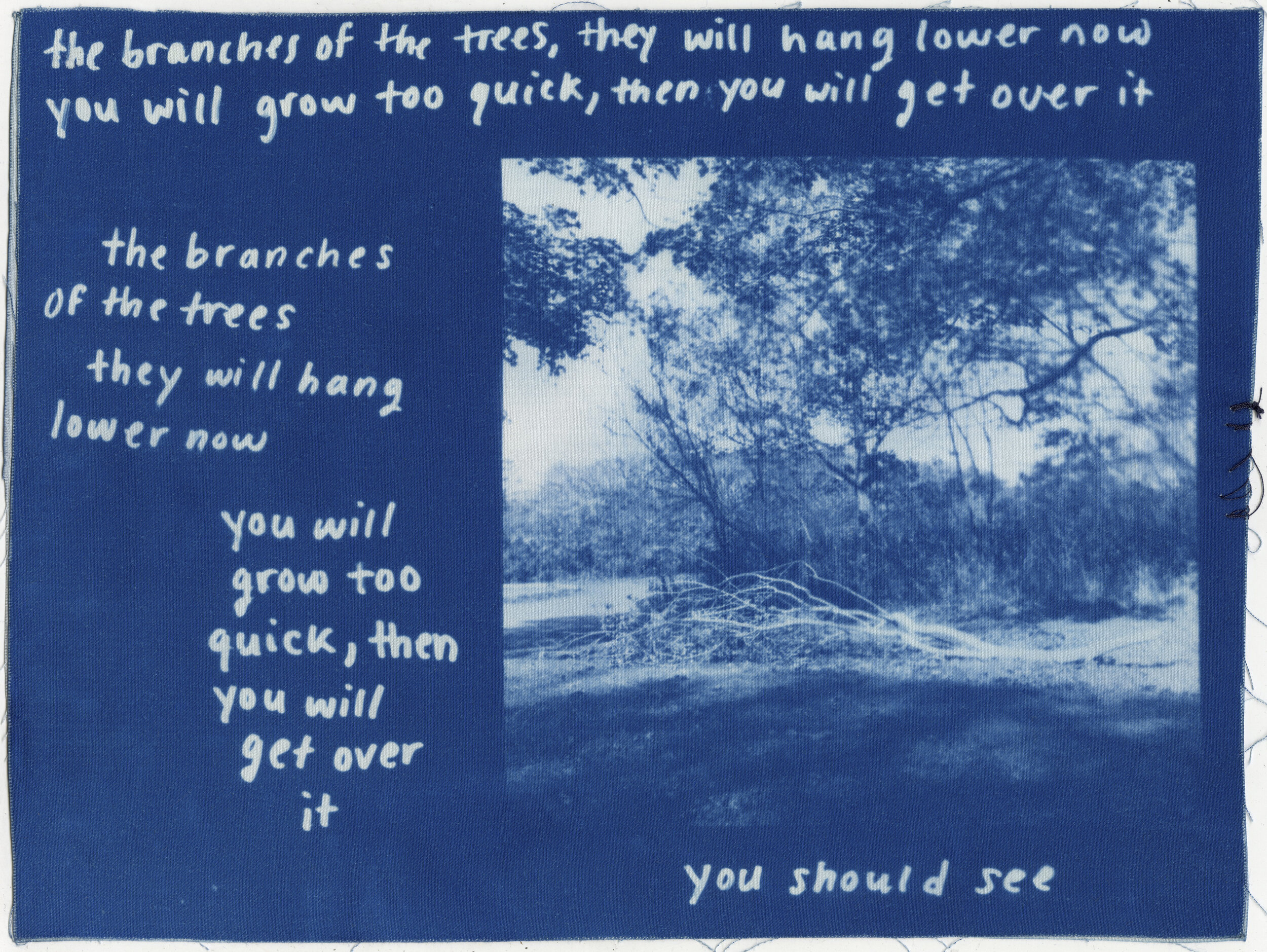
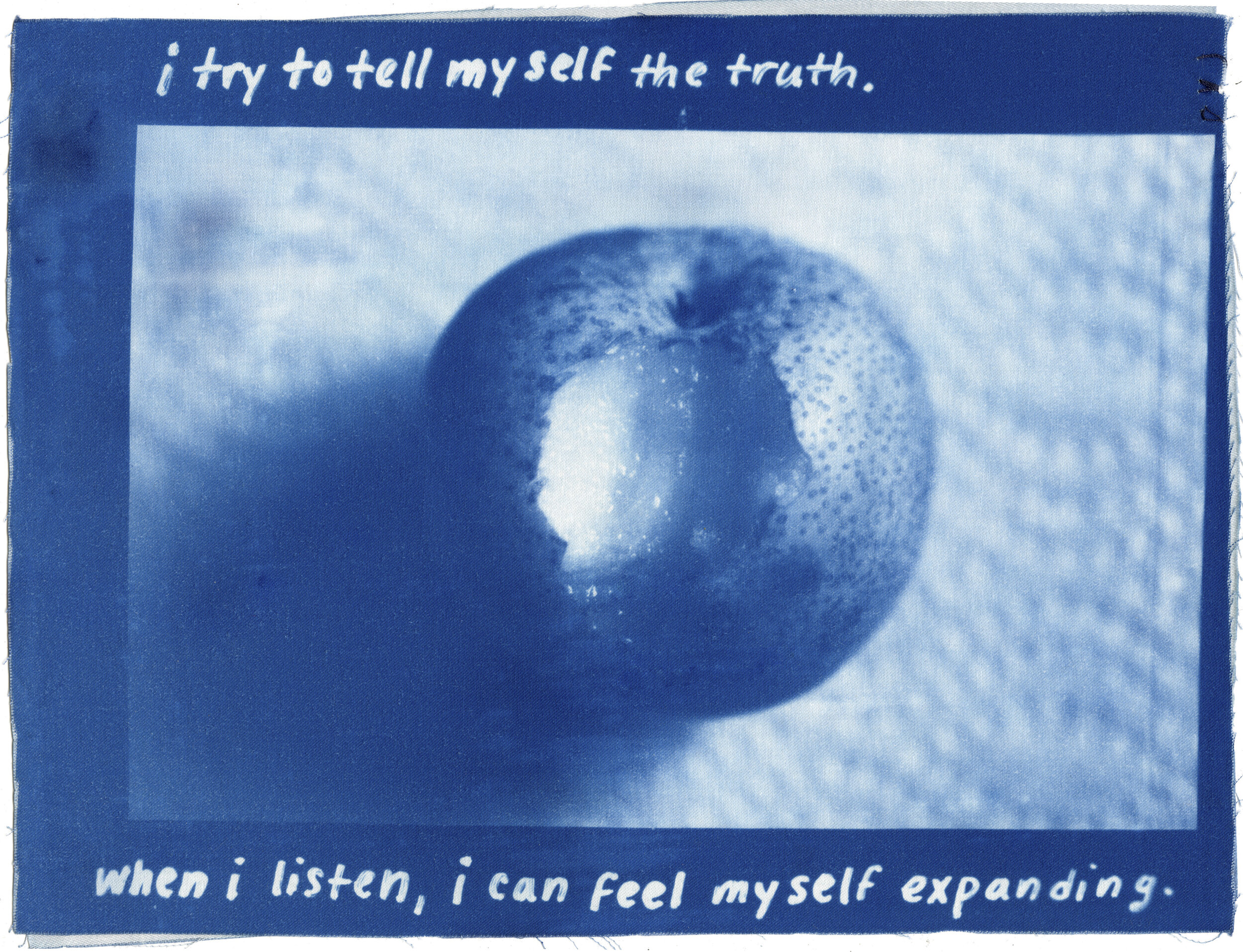
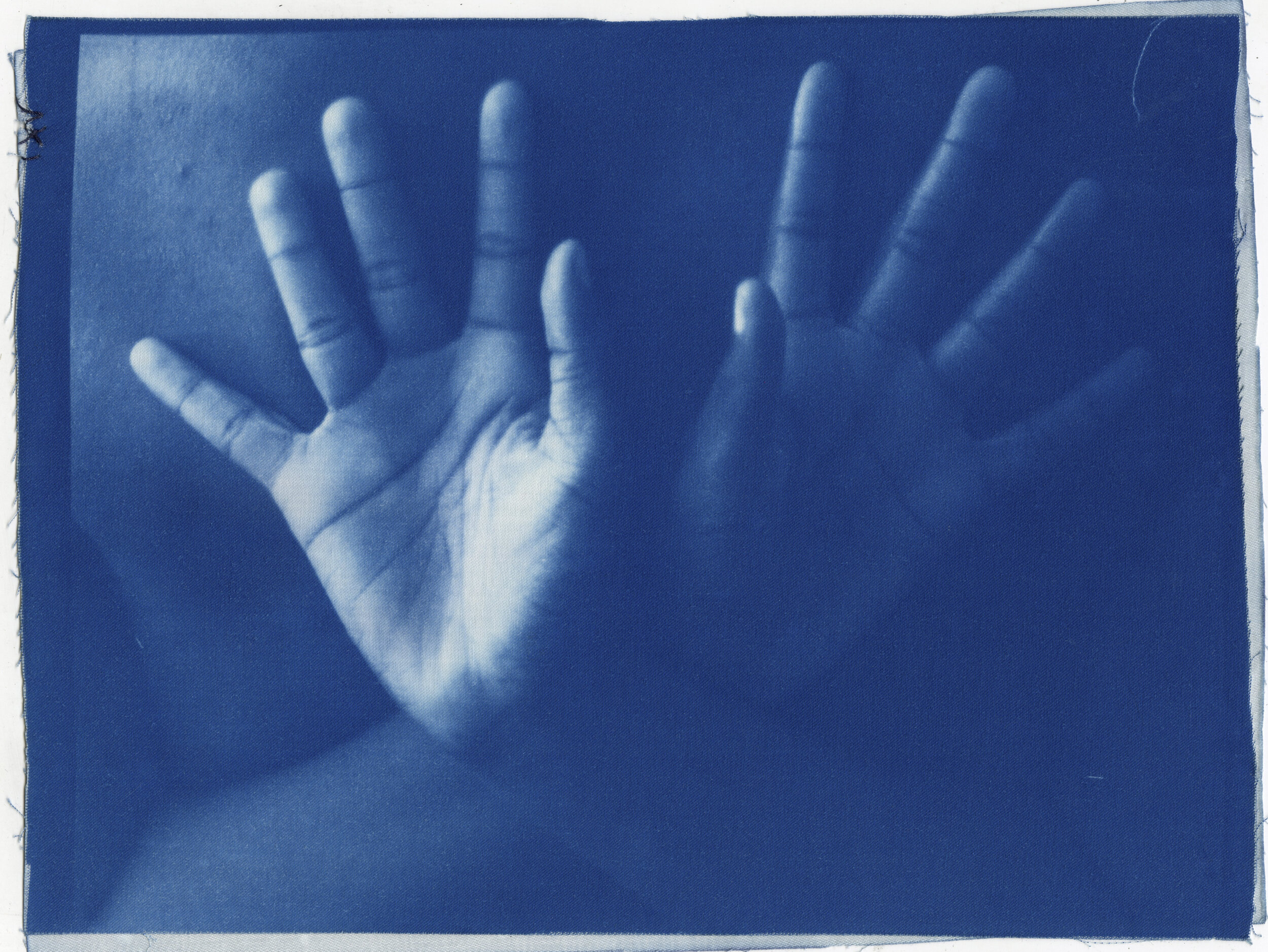
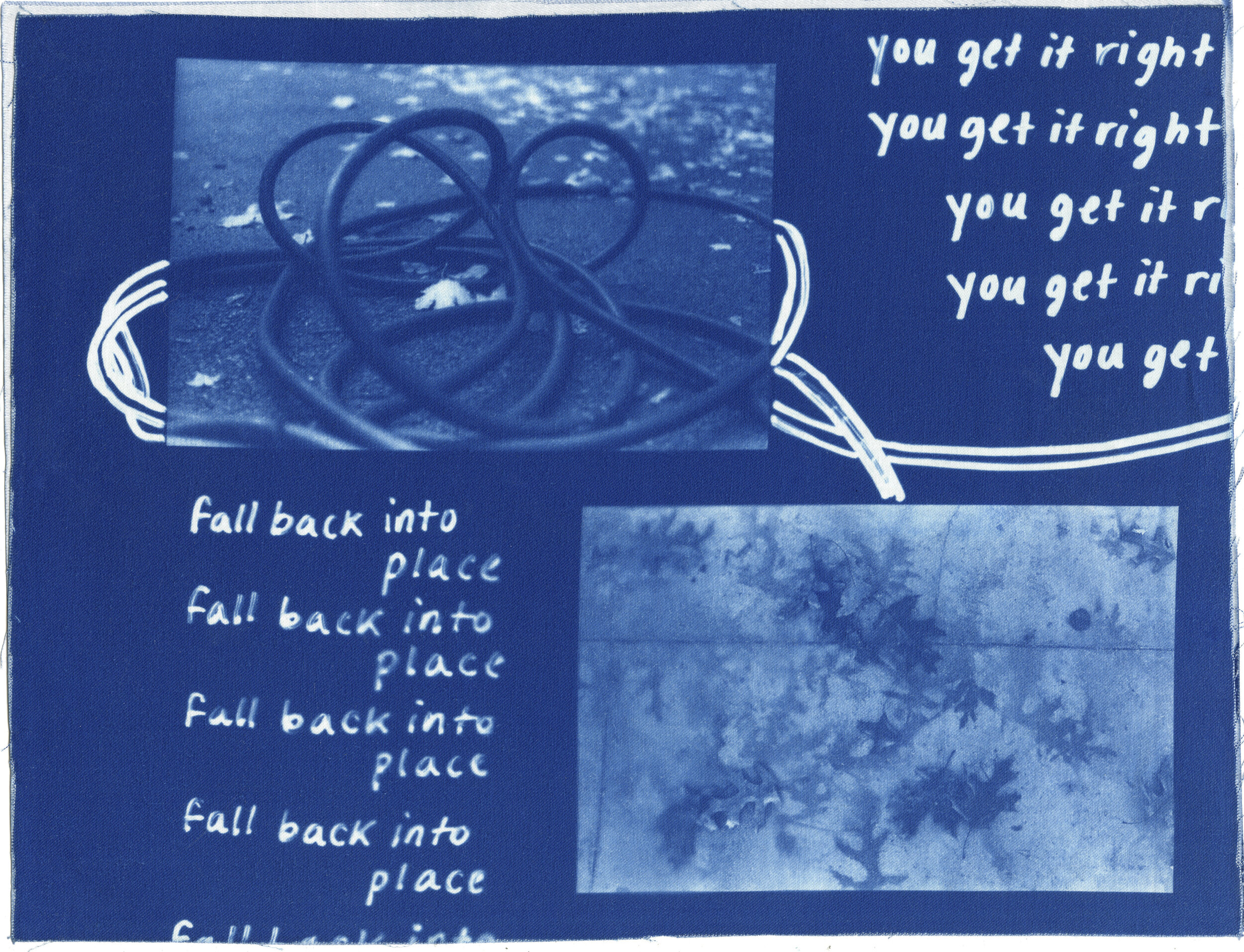
Alcove Gallery: Vanessa Leroy
there’s a place i want to take you
We are honored to be exhibiting Leroy’s series, there’s a place i want to take you. She has created a book of cloth cyanotypes of journal entries from the 5th grade, family scrapbook photographs, passing thoughts, as well as photos she has taken between 2014 and 2019.
I wanted to re-contextualize these images by exposing them to light, creating diptychs, inserting test + illustrations, and binding the timeline with thread…I see photography as a tool for social justice, and with it I hope to create worlds that people feel as though they can enter and draw from, as well as provide a look into an experience that they may not personally recognize. -VL 2019
We share a young girl’s diary of her experiences and balance that against what is the reality of today. We will be showing both Leroy’s handmade book as well as individual pieces.
Vanessa Leroy is a 23-year-old photographer from Waltham, Massachusetts. She is currently completing her Bachelor of Fine Arts in Photography at the Massachusetts College of Art and Design. She remains on the hunt for new ways of seeing, remembering, and altering the world through photography. She is drawn to image making because of the power it holds to create nuanced representation for marginalized people and uplift their stories.
